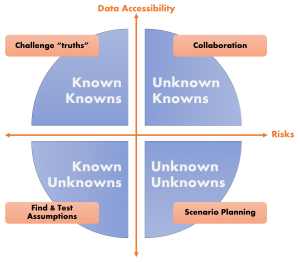The coronavirus will move past its pandemic state at some point shortly. Even when it is back to a new normal, it will never be the same again. What will the church look like in the next decade? We need to take a long view. Otherwise, there seems no hope in the near sights nor a better time to listen to Paul. In 2 Corinthians 5:7, Paul says, “We live by faith and not by sight.” When we intentionally take the long view, our future state helps us live out our faith today. I will briefly discuss the future scenarios to lay great stress on developing a new Church Online Strategy. The strategy would shape or even define your impending ministries.
When my dot-com venture was at its peak in 1997, a very similar question hit me: What could the church look like in 20 years? I then started an organization called ChruchParadigm to help churches prepare for the digital revolution’s impact. Upon stepping into a journey of a new church beginning in New York in 2007 for the next ten years, I articulated the very same question in a slightly different tone: What will be the spiritual flux in New York in 10 years? Amid the pandemic, I now ask what the church will look like in five years. Notably, the future span for the same question is shortened by half each time it pops into my head.
Future Scenario Planning
Even before the pandemic dramatically changed the world we know, churches have already passed through six+ stages at an ever-increasing Internet speed since the digital revolution disrupted traditional ministries. Exploring the causes and effects of each emerging stage could help you avoid any traps and disruptions intrinsic to your current and subsequent stages:
- The dawn of the digital revolution: Perfect disruption
- The fall of traditional paradigms: The rise of social network
- Live streaming of the onsite worship: A regrettable substitution
- A zero-sum game begins: No net change
- Crossing the boundaries of the local community: Woeful tales of a mega online church
- A chicken game begins: It turns out that “Nobody Wins,” but “Everyone Loses.”
I will write the details of the six stages in the next blog posts. The scenario planning analysis indicates that the four future scenarios are plausibly emerging depending on two uncertainties: (1) people prefer online over offline; (2) the community would ask churches to take a leadership/new role for the community:
- House Church
- Cluster Hybrid Church
- Virtual Church
- Fund Raiser
Are you interested in exploring what the church looks like in each scenario? What could be indicators for each scenario to become a reality? Which critical questions should the church ask for each scenario and be ready to answer? If you want to receive this work in pdf, please submit the contact form by indicating it in the message section.
Church Online Strategy
The online community is not a piggyback ministry to the main onsite churches in the four future scenarios. It has its autonomous existence. It is not just another storefront to the digital world, either. It will outgrow the existing onsite worship community in three scenarios. The online community in two scenarios will cannibalize the onsite community. The Cluster Hybrid Church is an exciting and promising scenario. I will spend a reasonable amount of time illustrating it in the following posts since it might be IT! The church could become more relevant to what your community wants to see in that scenario. It could solve the existing structural issues causing churches not to be sustainable today, especially for the mainline churches. It may create more full-time positions.
The online community indeed has its place in the future, and we need to develop a strategy to differentiate it from the existing onsite community. Even before the pandemic dramatically changed the world we know, churches have already passed through six+ stages at an ever-increasing speed of the Internet since the digital revolution disrupted traditional ministries. It will be beneficial if you can identify the stage your congregation is in now. Exploring the causes and effects of the transition to the following stages will help you avoid any traps and disruptions in the current and subsequent stages. I will indeed spend some time navigating these stages in the next posts:
- The dawn of the digital revolution: Perfect disruption
- The fall of traditional paradigms: The rise of social network
- Live streaming of the onsite worship: A regrettable substitution
- A zero-sum game begins: No net change
- Crossing the boundaries of the local community: Woeful tales of a mega online church
- A chicken game begins: It turns out that “Nobody Wins,” but “Everyone Loses.”
With the rise of social networks, there was a contemporary realization: the traditional ministry paradigms were no longer working in the emerging culture. The Local SEO (Search Engine Optimization) for local searches, such as “churches near me,” once became a new successful evangelism strategy. However, it is not the case anymore. People are not using social media for their spiritual practices, and they are not searching the church-related keywords. At best, substituting or simulating the onsite worship into the online space was a wrong move into a zero-sum game. It was expected and is now known that the rate of return-to-onsite worship has been meager. This will prevail in the post-pandemic.
Strong voices are saying you should invest your resources in online worship since it is and will be a crucial part of your ministry from this moment onwards. It is partially agreeable, but the existing form of online worship will not effectively welcome people thriving in today’s culture. A culturally-online person tends not to enjoy an hour-long video streaming unless it is a Netflix-buster. Churches, in a sense, forced their folks, without examining the consequence of their move, to migrate to the online world during the pandemic. Many will continue hanging there for now because it goes with the cultural trends, even though the online worship experience is never meant to replace the in-person worship experience. It won’t last long before we witness many will disappear from the online worship gathering unless you intentionally create an emerging online community with unique value propositions. It is essential that you may keep your onsite and online community growing independently in a way by offering its unique value proposition. When you construct your value propositions, remember that you should honor and seek meaningful and relevant relationship building through your online community. The immediate question is: How do you plan to onboard the online-only participants as official church members taking various leadership roles. I have a couple of more critical questions for you to answer to develop your church’s online strategy for the digital age. I will raise them in the following posts.








